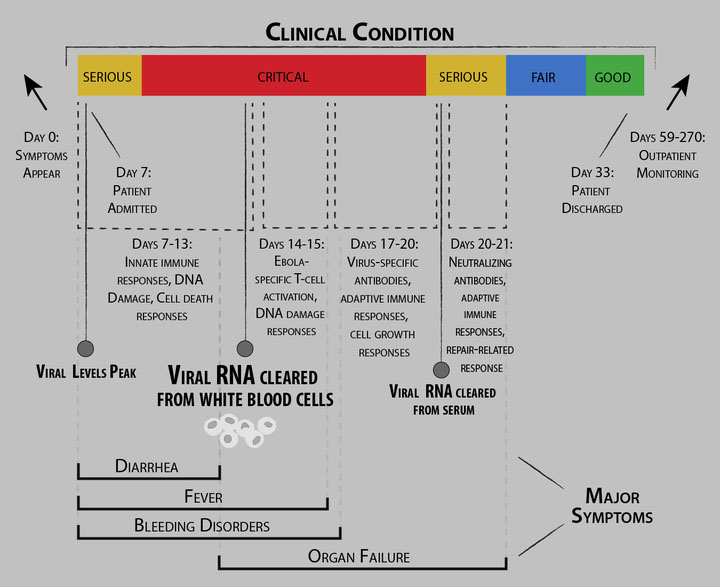Study describes course of acute illness and recovery in Ebola patient
An NIH-led study is the first to describe the course of acute illness and recovery in a patient with Ebola virus disease.
Researchers said their observations of a patient who received care during the West African outbreak could provide insight into the pathogenesis of Ebola and help improve treatment in future outbreaks.
“While the first caveat is that we have only been able to study one patient in this way and cannot conclude that the responses are typical or representative of what would be observed in other patients, we think there are a number of interesting take-home points,” Jeffrey K. Taubenberger, MD, PhD, chief of the viral pathogenesis and evolution section in the laboratory of infectious diseases at the NIH’s National Institute of Allergy and Infectious Diseases, told Infectious Disease News.
Implications for care
Through daily peripheral blood samples, Taubenberger and colleagues tracked changes in gene expression in a health care worker from Sierra Leone who was evacuated to the NIH Clinical Center in Bethesda, Maryland, in 2015. The patient, a man aged 34 years, arrived at the NIH facility 7 days after presenting symptoms of Ebola virus disease, before onset of critical illness.
The patient received supportive care but was not treated with experimental Ebola therapies. He recovered and was released after 26 days at the facility.
According to an NIH news release, Taubenberger and colleagues used the daily blood samples to measure the rise and decline of virus replication inside the patient’s white blood cells and serum, and track the timing, intensity and duration of expression of numerous immune system genes. They correlated changes in gene expression with changes in the patient’s clinical condition.
A second news release noted that viral levels did not correlate with disease severity in the patient. For example, there were no traces of Ebola in his peripheral white blood cells 13 days after illness onset, but he remained in critical condition for 6 more days.

“While Ebola virus infects multiple host cells and tissues, in this case, clearance of virus from the circulating white blood cells was a key point in disease progression, leading to a dramatic shift in gene expression responses from an antiviral state to one in which Ebola-specific immune responses and cell and tissue repair responses began to predominate,” Taubenberger said. “This is interesting because these dramatic gene expression changes in [peripheral blood leukocytes] occurred prior to evidence of clinical improvement by several days.
“If these observations hold up in other Ebola virus-infected patients, molecular tests for clearance of virus from PBL, as opposed to viral RNA in serum, and perhaps designing a panel of RT-PCR assays to assess representative genes on either side of this transition could provide key prognostic information about outcomes.”
According to Taubenberger, the study suggests that molecular profiling of multiple patients with Ebola or other infectious diseases could provide diagnostic and prognostic biomarkers of disease progression and outcome data that can inform clinical care.
“More patients need to be so studied, and then biomarker assays can be developed and validated,” he said.
Survival chances
Taubenberger and colleagues said the severity of the patient’s multiple organ dysfunction suggests he would have died if he had received care in a more resource-limited setting and that his blood tests were consistent with those observed in fatal cases of the disease.
“The survival of Ebola virus disease patients treated with supportive care in North America and Europe is much higher than was observed for patients treated in Africa, where critical care, especially IV fluid and electrolyte support, was not often available,” Taubenberger said. “This suggests that fluid replacement and careful hemodynamic monitoring can allow Ebola virus disease patients to clear virus and avoid the lethal consequences of multiple organ failure, hypovolemic shock, and death in the absence of specific antiviral therapy.” – by Gerard Gallagher
References:
Kash JC, et al. Sci Transl Med. 2017;doi:10.1126/scitranslmed.aai9321.
Disclosures: One researcher for the study by Huttner and colleagues reports being employed by NewLink Genetics Corporation.

